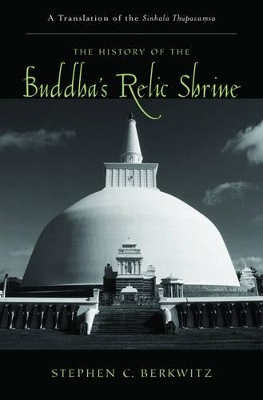Buddhist chronicles have long been a subject of central importance in the study of Buddhism. But while scholars have acknowledged the importance of Theravada chronicles for reconstructing the history of Buddhism and South Asia, they have relied almost exclusively on Pali works such as the Mahavamsa as sources of historical information. In this book Stephen Berkwitz offers the first complete English translation of the Buddhist chronicle called the Sinhala Thupavamsa,
composed by Parakama Pandita in thirteenth-century Sri Lanka. One of the first Buddhist histories of its kind to be written in the language of Sinhala, this work represents a substantially longer and embellished version of an older Pali language work called the Thupavamsa. Unlike the Pali sources
that were composed by elites for learned audiences throughout the Buddhist world, this text is an important example of the large number of Buddhist histories written in local languages for popular consumption. From this work, we learn how elite Buddhist narratives were often refashioned into Sinhala works that drew upon stories of the past to edify and entertain a wider audience. As a text written in a literary dialect of the vernacular Sinhala language, the Sinhala Thupavamsa contains a richly
descriptive account of how Buddhism spread outside of India, replete with poetic embellishments and interpolations not found in other accounts of those events. Aside from being an important literary work, the Sinhala Thupavamsa is a text of considerable historical and religious significance. The
local nature of its language and vision gives it contemporary relevance in Sri Lanka. The text celebrates devotionalism and seeks to persuade its audience to embody the same virtues of generosity and piety exemplified by the heroes of Buddhist history. There are at least three Sinhala editions currently in print in Sri Lanka and widely available in bookstores for students and practitioners. The text is also among those works that inform public discussion and debate over the place of Buddhism in
the Sri Lankan nation state and the role of Buddhist monks in contemporary politics. The Sinhala Thupavamsa comprises several narrative strands that relate the life story of the Buddha and the manner in which the teachings and institutions he founded were established on the island of Sri
Lanka in ancient times. The central focus of this work concerns the variety of relics associated with the historical Buddha, particularly how the relics were acquired and the presumed benefits of venerating them.The text also relates the mythological history of the Buddhas previous lives as a bodhisattva and concludes with a prediction about the future Buddha Maitreya. Renowned Buddhist kings such as King Ashoka and King Dutthagamani (Sinhala: Dutugamunu) are celebrated in this work for their
prowess in war and their exemplary acts of religious giving. Reflection on Buddhist ethics and instruction on the Dharma, or the Buddhas teaching, are found throughout the work, indicating that this historical narrative was meant both to recall the past and give rise to religious practice among
contemporary readers and listeners. The publication of this translation for the first time in the west adds to the knowledge of how local Buddhist communities imagined and represented their religious and cultural heritages in written works.
- ISBN10 0195301390
- ISBN13 9780195301397
- Publish Date 11 January 2007 (first published 1 January 2007)
- Publish Status Active
- Publish Country US
- Imprint Oxford University Press Inc
- Format Hardcover
- Pages 320
- Language English
